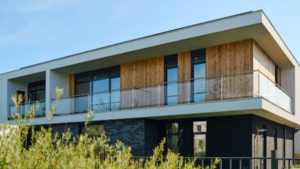Your Guide To Domestic Staircase Regulations

So, you’re in the process of, or are thinking about, renovating your staircase.
Up until now you’ve probably been focusing on designing your dream staircase, planning your project and sourcing the perfect stair parts.
It can be easy to get carried away with all the possibilities.
But as well as the design of your new staircase, there are some serious health and safety considerations to consider.
In the UK, there are some staircase building regulations you need to follow.
These regulations ensure your staircase is as safe as possible, and any slips and falls are prevented wherever possible.
These regulations cover everything from the height of your steps to the distance between your spindles.
Stair part experts, Stair Crazy, have put together this guide to help you navigate the domestic staircase building regulations.
Regulations for your Treads and Risers
Treads and risers make up the steps on a staircase.
Because of the amount of footfall your staircase will receive, the building regulations for treads and risers are quite extensive, covering everything down to the overlap between a tread and riser.
- Steps must all be level and should overlap (this is also known as nosing) by at least 16mm.
- Your risers cannot be steeper than 220mm each and every step must be the same height. For example, if one riser is 200mm, another cannot be 210mm.
(The only exception to this rule is if your staircase is broken up by a flat landing area. In this case, the steps on either side of this landing can vary. For example, the stairs below the landing area can each be 200mm tall, whilst the steps after the landing area can be 210mm.)
- To ensure you can step on your stairs safely, the going – or depth – of your treads should be a minimum of 220mm.
- There is no maximum height for a staircase, however if your staircase consists of more than 36 risers, there should be a change of direction of at least 30° – even if there is a small landing within the staircase. This change of direction breaks up the staircase slightly, so if someone were to fall from the top, it’s unlikely they would fall all the way down.
- If you opt for a modern staircase with open risers, a 100mm sphere shouldn’t be able to pass between the gaps – this will prevent any unfortunate accidents.
- The maximum pitch is 42°
Regulations for handrails and spindles
Handrails and spindles are a significant design element in any staircase and should be carefully considered.
While design is a consideration when choosing a handrail and spindles, their main purpose is to provide an added safety precaution. Therefore, there are a few vital regulations you need to consider.
- It’s a legal requirement to have at least one handrail on your stairs – whether wall mounted or attached to your spindles.
- If your staircase is wider than 1 metre, you must have a handrail on both sides
- Your handrail should be between 900mm and 1000mm high.
- Similar to open risers, a 100mm sphere shouldn’t be able to pass through your spindles. If you choose glass panels instead of spindles, this rule still applies – no gaps should allow a 100mm sphere to pass through.
Meeting domestic staircase regulations
All staircases in UK homes must be constructed to meet these government regulations.
Although it may sound like a lot, following these building regulations will ensure a safe staircase that will last for years to come.
If you’re unsure of any of these staircase regulations, all genuine staircase experts should be aware of these regulations and will be able to talk you through them.








